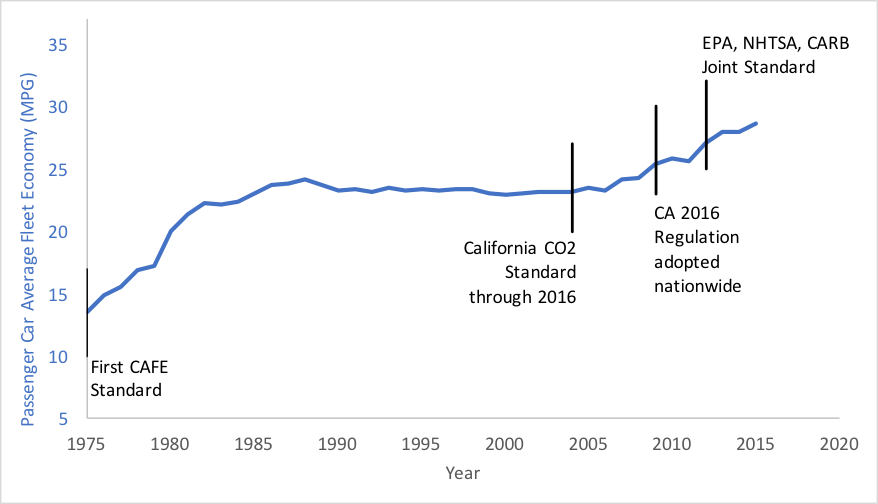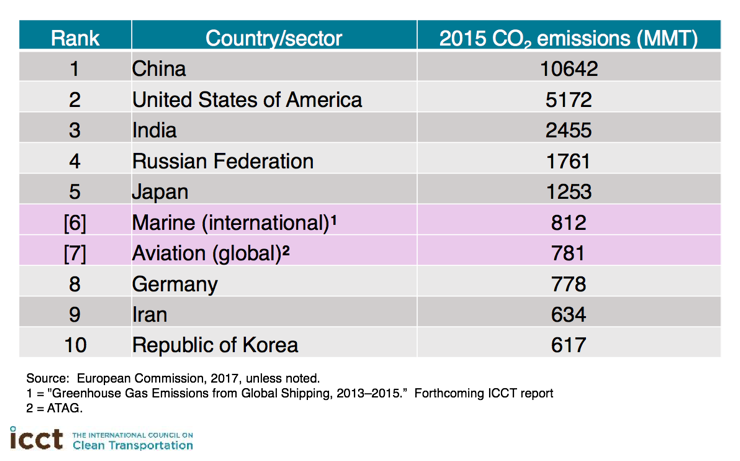Cost assessment of near- and mid-term technologies to improve new aircraft fuel efficiency
Blog
Maximizing aircraft fuel efficiency: Designing from scratch
Why aren’t we seeing more radically fuel-efficient aircraft, the way we’re seeing more efficient cars and trucks? You can get a lot of different answers to that question, depending on who you ask. We thought it’d be a good idea to ask a few experts in aeronautical engineering. And we happened to know some: specifically, the technical advisory group who worked with us on our cost assessment of near- and mid-term technologies to improve new aircraft fuel efficiency.
The result is a series of interviews, which we’ll be publishing here over the next few weeks. In general, our hope is to illuminate the potential fuel-burn benefits of “clean-sheet” aircraft designs, to give a sense of how they influence the fuel efficiency trends in general, the risks that come with them, and, most importantly, what might be done to encourage them.
Aircraft fuel efficiency in general has improved over the decades. The aircraft we fly on today burn on average 60% less fuel than the first generation of commercial jetliners. Interestingly, the downward trend was not a smooth one. The 1970s and 1980s saw sharp increases (and even some annual decreases) in the fuel efficiency of new commercial aircraft. But the following few decades saw fewer and more gradual changes, with a stagnant period for a decade after 1995 followed by renewed improvement only over the past few years. There are many reasons for this, but it’s clear that a dearth of “clean-sheet” aircraft designs, done from scratch instead of as modifications of existing types, in the market had something to do with it.
Part of the sharp decrease in the average commercial aircraft fuel burn in the 1960s and 1980s can be attributed to the rise of high-bypass turbofan engines, which provide improved fuel economy, greater thrust, and less noise compared to earlier low-bypass ratio engines. High-bypass turbofan engines powered three new aircraft in that period: the Boeing 747 (four engines), the DC-10 (three), and the Airbus A300 (two). High-bypass turbofans were introduced more gradually into narrow-body aircraft designs, starting with re-engining existing models such as the DC-8 and B737. Narrow-bodies are the most common aircraft type (more than 55% of US passenger airplanes today), yet we generally see less competition on this class compared to others, as can be seen in Figure 2.
In contrast to the regional jet segment, which has seen a steady stream of new aircraft types coming into (and falling out of) the market every decade, the number of single-aisle aircraft types in production has fallen sharply since the 1960s, when eight new types entered service. The following decades saw many fewer new aircraft types coming into the market, which came to be dominated by only two aircraft families: the Airbus A320 and the Boeing 737. While the average production lifetime of single-aisle aircraft has historically been approximately 21 years, the Boeing 737 family and Airbus A320 family reached their 49th and 29th production anniversaries this year. Both Boeing and Airbus now market re-engined versions of these types, thus stretching the production lifetime to the late 2020s and possibly beyond. We see a similar trend with the twin-aisle market, which has been dominated by Boeing and Airbus since the 1980s. The two manufacturers are also offering re-engined versions of their most popular twin-aisle aircraft types, the Airbus A330 and Boeing 777, stretching their lifetimes in production to over thirty years.
On the other hand, the Boeing 787 Dreamliner, a clean-sheet aircraft that entered into service in 2011, shows the potential for fuel-efficiency gains from new aircraft types developed from scratch. Although it still uses tube-and-wing architecture, the 787 boasts 50% composite fraction by weight, including its all-composite barrel fuselage. Together, the advanced engines, improved aerodynamics, and lightweight materials used in the 787 provide up to 25% improvement in fuel efficiency compared to previous designs. Norwegian Airlines, which uses an all-787 fleet for its long-haul routes, ranked first in fuel efficiency among 20 transatlantic carriers in 2014. The fuel-efficiency improvements offered by the 787 are consistent with ICCT’s assessment of aircraft fuel-efficiency technologies, which found that emerging aerodynamic and structural technologies together could be as important as new engines in reducing new-aircraft fuel burn, but are slower to be deployed.
The saying “necessity is the mother of invention” certainly applies to the history of aircraft fuel efficiency. During the 1970s energy crises, jet-fuel prices soared. This in turn fueled NASA’s Aircraft Energy Efficiency (ACEE) program to develop technologies that would increase the fuel efficiency of commercial aircraft. The program ran from 1973 to 1987 and had a major influence on commercial aircraft designs, spurring among other things the development of secondary structure components made of composite materials, such as the horizontal tails, vertical fins, and ailerons. However, as the energy crisis passed, the two ACEE programs that promised the most fuel-efficiency gains, namely advanced turboprop and laminar flow control to reduce drag, became irrelevant to the industry and never made it into production.
Decreased competition caused by consolidation of US aircraft manufacturers help. McDonnell Aircraft Corporation and Douglas Aircraft Company merged in 1967 to form McDonnell Douglas, which was in turn acquired by Boeing in 1997. Consequently, the number of new aircraft designs coming into the market dropped.
Without the impetus provided by either high fuel costs or market competition, and given sufficient demand for small incremental improvements to their existing models, it is easy to understand why aircraft manufacturers do not put more effort into developing new aircraft designs, with their steep production learning curve that may drive production costs up and profits down.
So now what? What can be done when radical measures to provide the stimulus that fuel costs and market competition aren’t providing are needed to meet the International Civil Aviation Organization’s (ICAO) goal of carbon-neutral growth in 2020, not to mention reducing carbon dioxide emissions by 50% in 2050? Or is there any? Stay tuned for the experts’ views.


